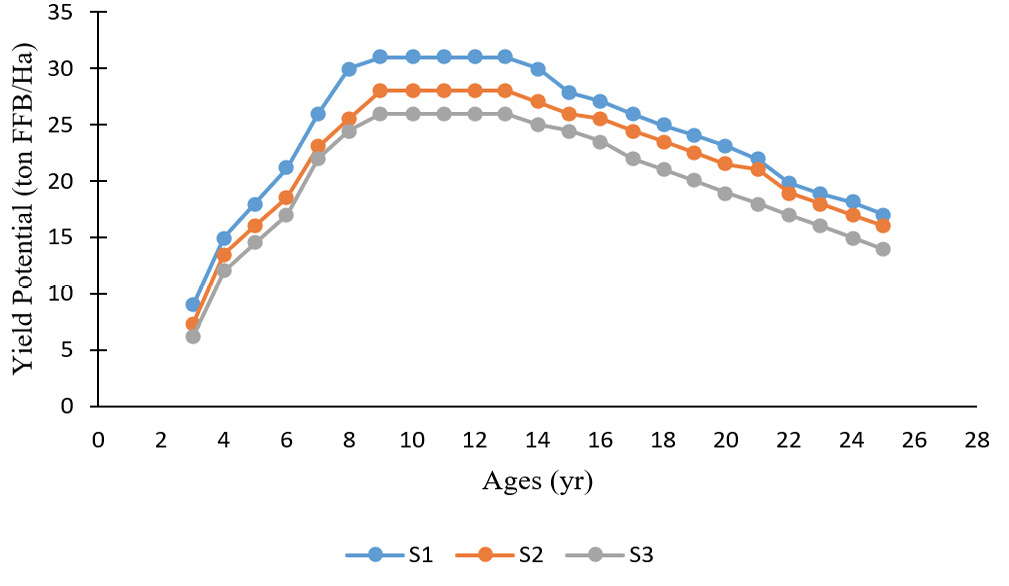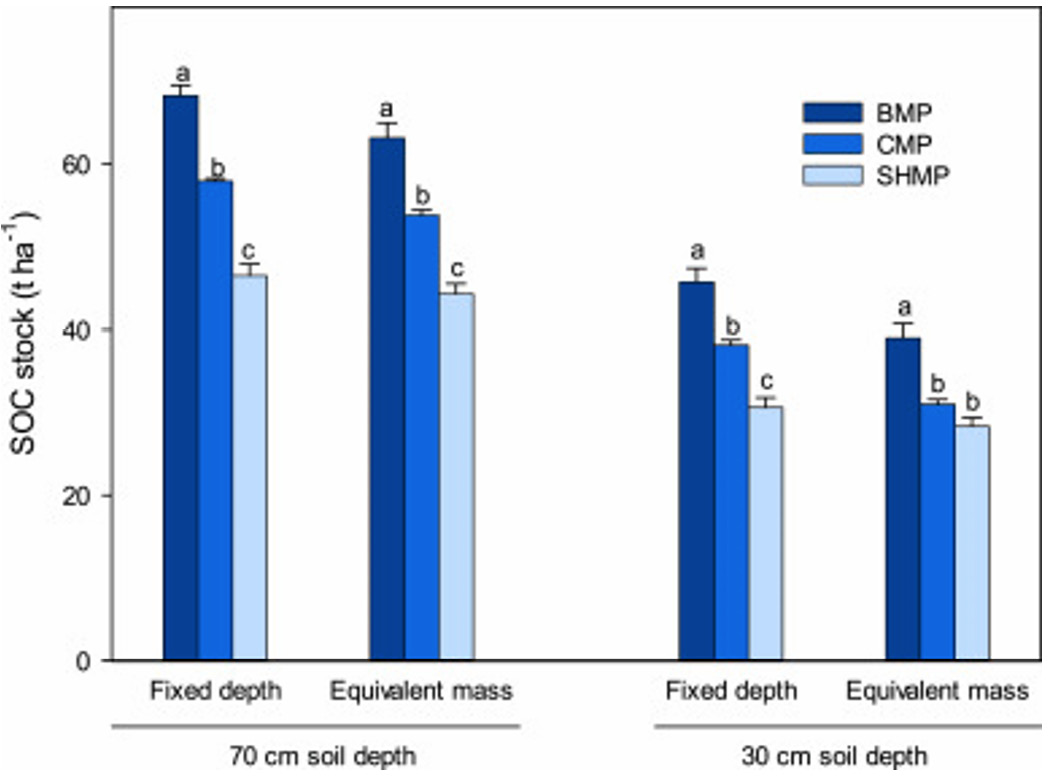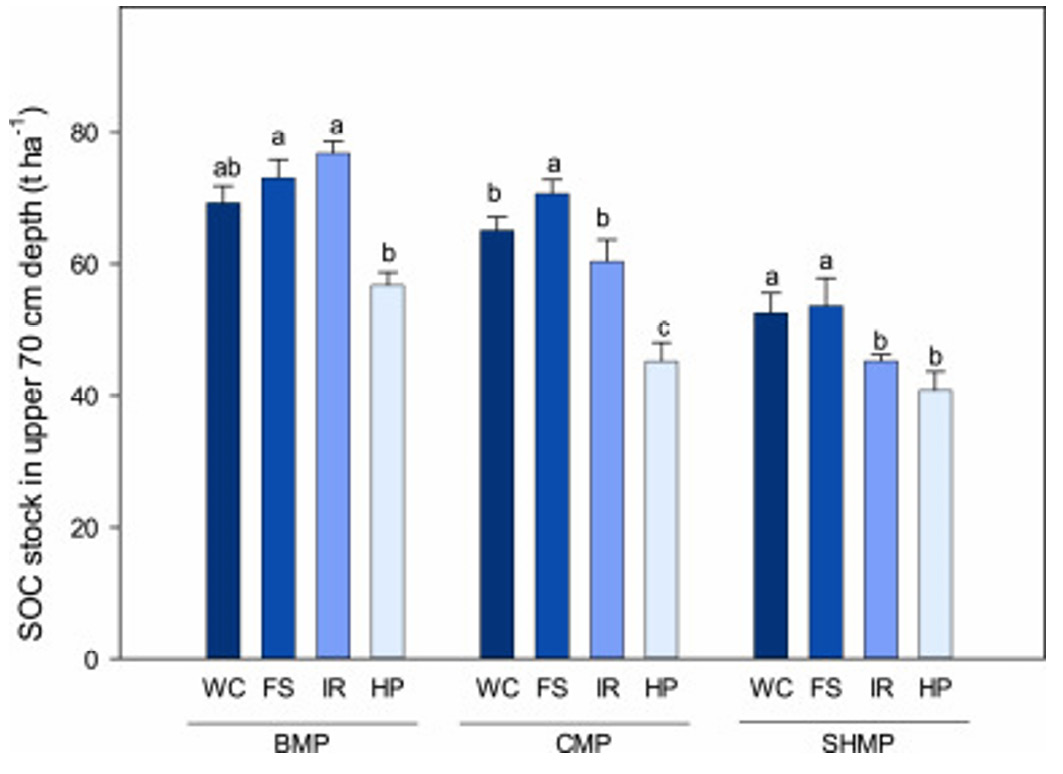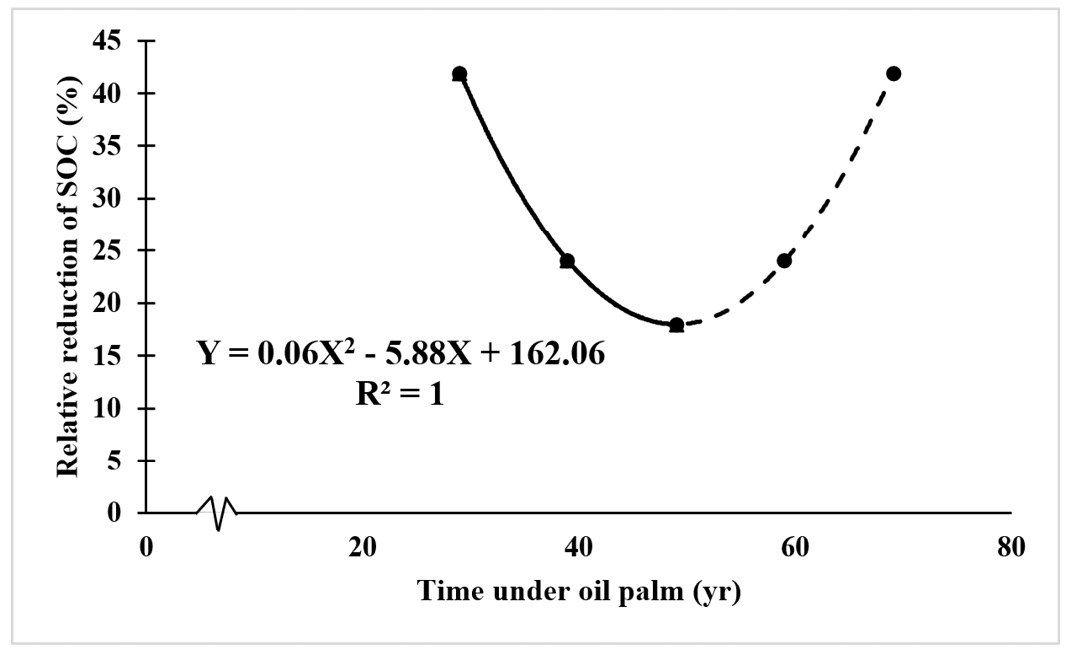Land Suitability Assessment and Soil Organic Carbon Stocks as Two Keys for Achieving Sustainability of Oil Palm (Elaeis guineensis Jacq.)
Land Suitability Assessment and Soil Organic Carbon Stocks as Two Keys for Achieving Sustainability of Oil Palm (Elaeis guineensis Jacq.)
Didiek Hadjar Goenadi1,2*, Roy Hendroko Setyobudi3,4, Erkata Yandri3,4, Kiman Siregar5,6, Aris Winaya7, Damat Damat7, Wahyu Widodo7, Ahmad Wahyudi7, Praptiningsih Gamawati Adinurani4,8,
Maizirwan Mel9, Ivar Zekker10, Muhammad Zul Mazwan7, Devi Dwi Siskawardani7,
Endang Dwi Purbajanti11 and Ida Ekawati12
Yield patterns of oil palm on different land suitability classes for oil palm (PPKS, 2010).
Total SOC stock patterns of upper 70 cm and upper 30 cm soils under three management systems, calculated using fixed-depth and equivalent soil mass approaches regarding relative areas of four management zones. Different letters denote significant differences among management systems (P < 0.05) (Rahman et al., 2021).
SOC stock patterns in four management zones at different depths under three management systems (WC = weeded circle, FS = frond stack, IR = interrow, and HP = harvesting path). Different letters indicate SOC stock significance (P < 0.05) of upper 70 cm in different management zones per management system (Rahman et al., 2021).
Pattern of SOC reduction and presumed recovery during oil palm planting cycles (data extrapolated from (Rahman et al., 2021).










